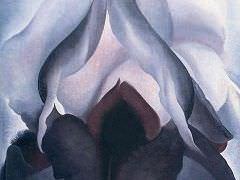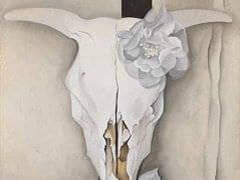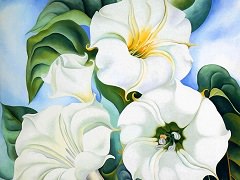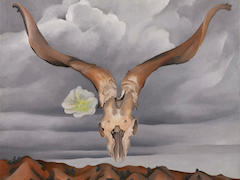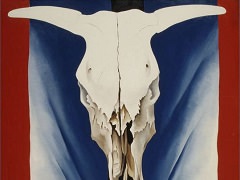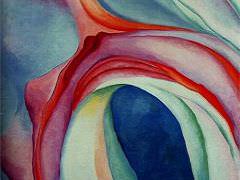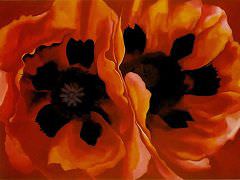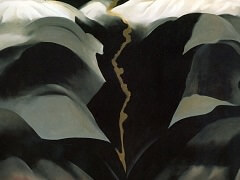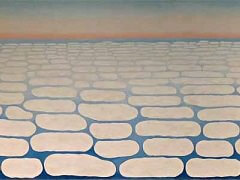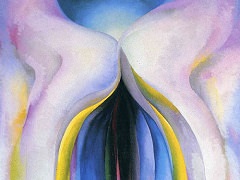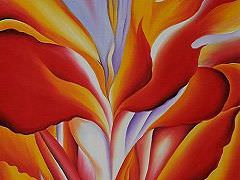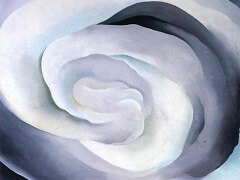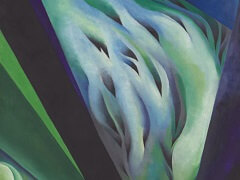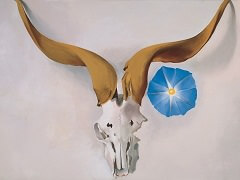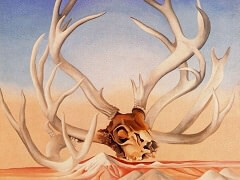Grey Lines with Black, Blue and Yellow, 1923 by Georgia O'Keeffe

In this masterpiece of Georgia O'Keeffe's career, precisely delineated, undulating folds and lucid, three-dimensional forms work together to create an image of potent ambiguity suggesting either portrayals of plant life or, as
some critics have argued, abstractions based on the female anatomy.
Many of the works produced by Georgia O'Keeffe during the 1920s and 1930s hover enticingly on the margins between figuration and abstraction. The notion that art could be entirely non-representational, or abstract, was widely
explored in the decode from 1910, particularly in the work of the Russian painter Wassily Kandinsky (1866-1944) and the Dutchman Piet Mondrian
(1872-1944). Although O'Keeffe did not visit Europe during this period, she would have been made aware of these trends in European modern art through her contact with avant-garde circles in New York. Her attention would also
have been drawn to the Synchromist works of Stanton MacDonald-Wright (1890-1973), an early American supporter of abstraction. From early in her career, O'Keeffe experimented with abstract forms, most notably in the work
Blue and Green Music. However, the key strength of O'Keeffe's work often resided in its derivation from natural, organic forms, producing shapes and colours that evoke plant forms,
flowers, and shells. O'Keeffe's near-abstract, natural forms were highly influential on later painters.

